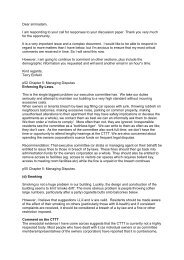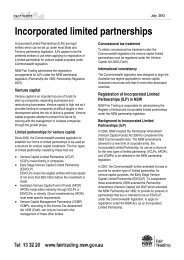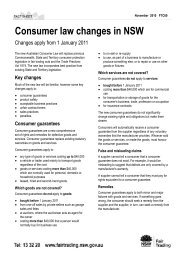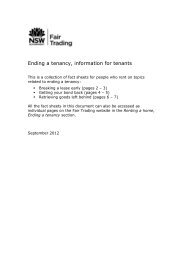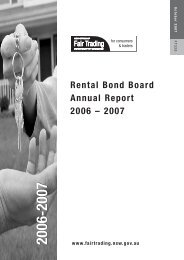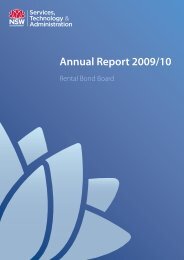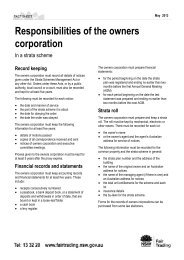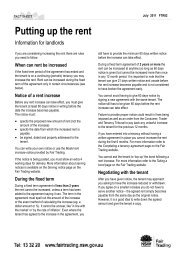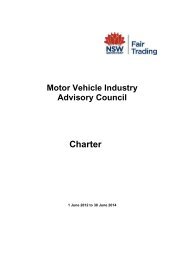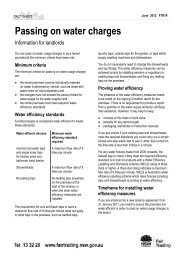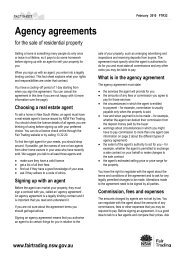High front guttering advisory committee report - NSW Fair Trading ...
High front guttering advisory committee report - NSW Fair Trading ...
High front guttering advisory committee report - NSW Fair Trading ...
You also want an ePaper? Increase the reach of your titles
YUMPU automatically turns print PDFs into web optimized ePapers that Google loves.
strengthening the roles and responsibilities of designers, builders and certifiers as an integrated<br />
supply chain that is better positioned to ensure the quality of compliance outcomes.<br />
12 Product Development to Improve Overflow Management<br />
In presenting to the Committee it was apparent that all of the leading gutter manufacturers had<br />
either developed or were in the process of developing new fitments to assist with overflow<br />
management. Most of the new fitments could be used as an additional measure to slotted gutters.<br />
Most provided continuous overflow including gap spacers between the gutter and fascia.<br />
Though the Committee felt such product development was a step in the right direction, only few had<br />
done sufficient research to be able to quantifiably measure the overflow performance of such<br />
fitments and until this level of knowledge is reached, such fitments cannot be used with the level of<br />
accuracy required to reliably address their contribution to preventing water entry based on the 100<br />
year ARI.<br />
The <strong>committee</strong> also had a general concern that for these new fitments to be successful, they require<br />
manufacturers to champion and promote the need for their usage, otherwise the existing ad hoc<br />
approach will continue to prevail.<br />
13 Sources of Information Causing Confusion About <strong>High</strong> <strong>front</strong>ed<br />
<strong>guttering</strong> Requirements<br />
In response to media and political concerns about the alleged problems of high <strong>front</strong>ed <strong>guttering</strong> in<br />
meeting BCA requirements, a number of organisations including <strong>NSW</strong> <strong>Fair</strong> <strong>Trading</strong>, Planning <strong>NSW</strong>,<br />
councils, industry associations and manufacturers have in the last two years produced their own<br />
brochures and circulars attempting to clarify the requirements and provide examples of <strong>guttering</strong><br />
designs and installation methods that would meet BCA requirements. While well intentioned, such<br />
documents have compounded confusion around the issue as some contain incorrect information or<br />
are incomplete in relation to the context and the need to consider all relevant factors such as the<br />
area and pitch of the roof, relevant ARI data, the number and size of downpipes, the type of<br />
<strong>guttering</strong> and fascia, the gap if any between the gutter and fascia, the eaves if any, and whether<br />
flashing or additional devices are to be installed. Also some brochures include diagrams and<br />
examples of various solutions for dealing with overflow that are not commonly used in industry or<br />
have limited relevance to high <strong>front</strong>ed <strong>guttering</strong>. As discussed previously under Section 9, this<br />
includes re-publishing examples from AS3500.3/3500.5 and this information has been potentially<br />
taken as mandatory when its context in the Standard is only at an “informative level”.<br />
A further example is in Planning Circular BS 09-006 where there is confusion in meaning caused by<br />
Planning <strong>NSW</strong>’s comment that overflow measures in the BCA’s “Acceptable Construction Practice”<br />
(Clause 3.5.2.5) should be consistent with AS3500.3 Appendix G. This potentially causes<br />
practitioners and certifiers to think that only AS3500 exists as an option in meeting Clause 3.5.2.5.<br />
This is incorrect and appears to be an interpreted view made by Planning <strong>NSW</strong> and not a view<br />
expressed in the BCA. For instance, Clause 3.5.2.5 and AS3500.3 represent different pathways of<br />
meeting “Deemed to Satisfy” requirements in the BCA. Given this, the circular should not suggest an<br />
exclusive link in construction requirements between the two documents because no such link exists.<br />
28



